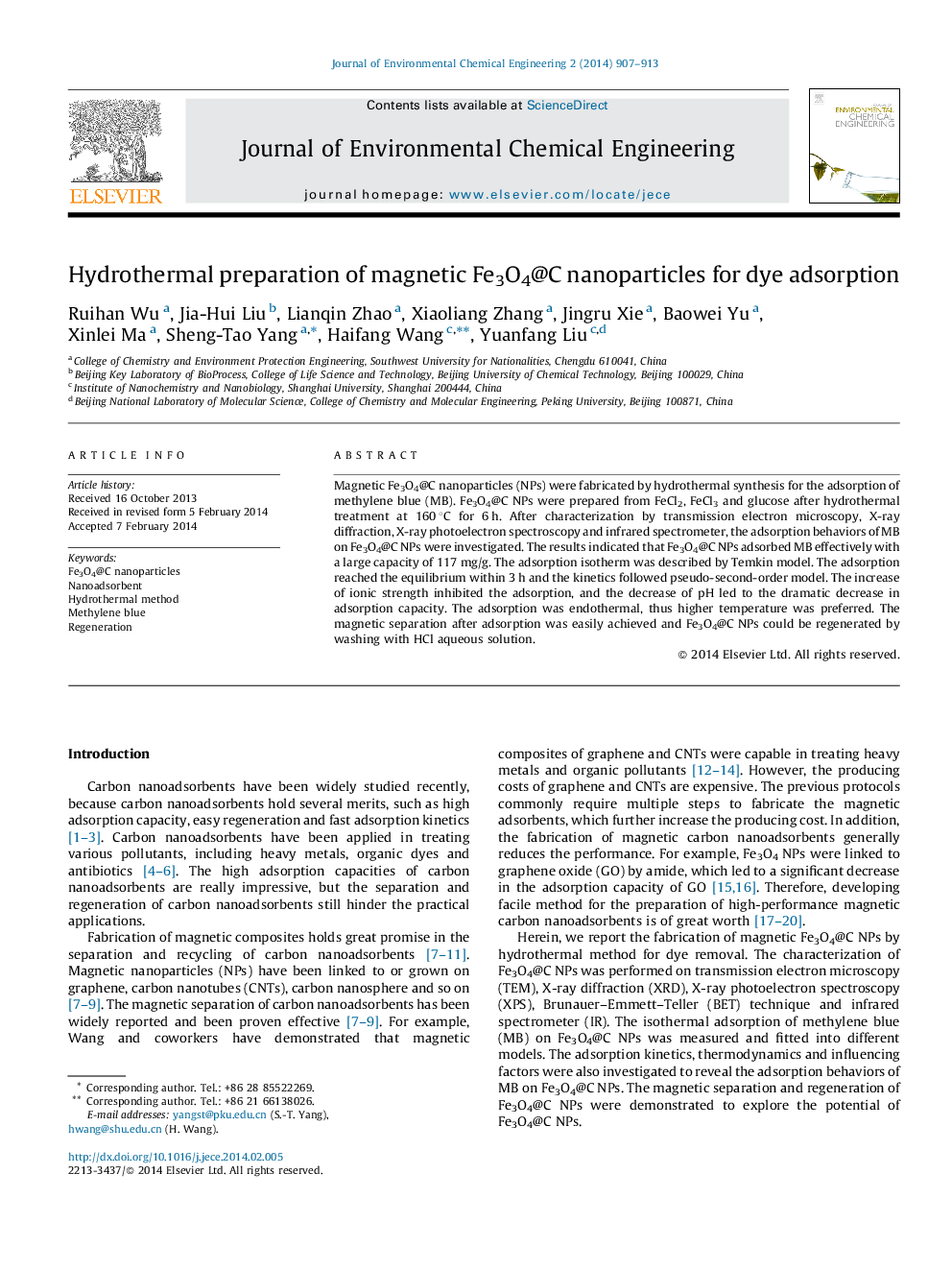| Article ID | Journal | Published Year | Pages | File Type |
|---|---|---|---|---|
| 221753 | Journal of Environmental Chemical Engineering | 2014 | 7 Pages |
•Magnetic Fe3O4@C nanoparticles were prepared by hydrothermal treatment for dye removal.•Fe3O4@C nanoparticles had a huge adsorption capacity for methylene blue, which was comparable to that of Fe3O4-graphene composites.•Fe3O4@C nanoparticles could be easily separated by magnetic separation and regenerated by washing with HCl aqueous solution.
Magnetic Fe3O4@C nanoparticles (NPs) were fabricated by hydrothermal synthesis for the adsorption of methylene blue (MB). Fe3O4@C NPs were prepared from FeCl2, FeCl3 and glucose after hydrothermal treatment at 160 °C for 6 h. After characterization by transmission electron microscopy, X-ray diffraction, X-ray photoelectron spectroscopy and infrared spectrometer, the adsorption behaviors of MB on Fe3O4@C NPs were investigated. The results indicated that Fe3O4@C NPs adsorbed MB effectively with a large capacity of 117 mg/g. The adsorption isotherm was described by Temkin model. The adsorption reached the equilibrium within 3 h and the kinetics followed pseudo-second-order model. The increase of ionic strength inhibited the adsorption, and the decrease of pH led to the dramatic decrease in adsorption capacity. The adsorption was endothermal, thus higher temperature was preferred. The magnetic separation after adsorption was easily achieved and Fe3O4@C NPs could be regenerated by washing with HCl aqueous solution.
Graphical abstractMagnetic Fe3O4@C nanoparticles were prepared via hydrothermal treatment, where Fe3O4@C nanoparticles had an adsorption capacity of 117 mg/g for methylene blue.Figure optionsDownload full-size imageDownload as PowerPoint slide
